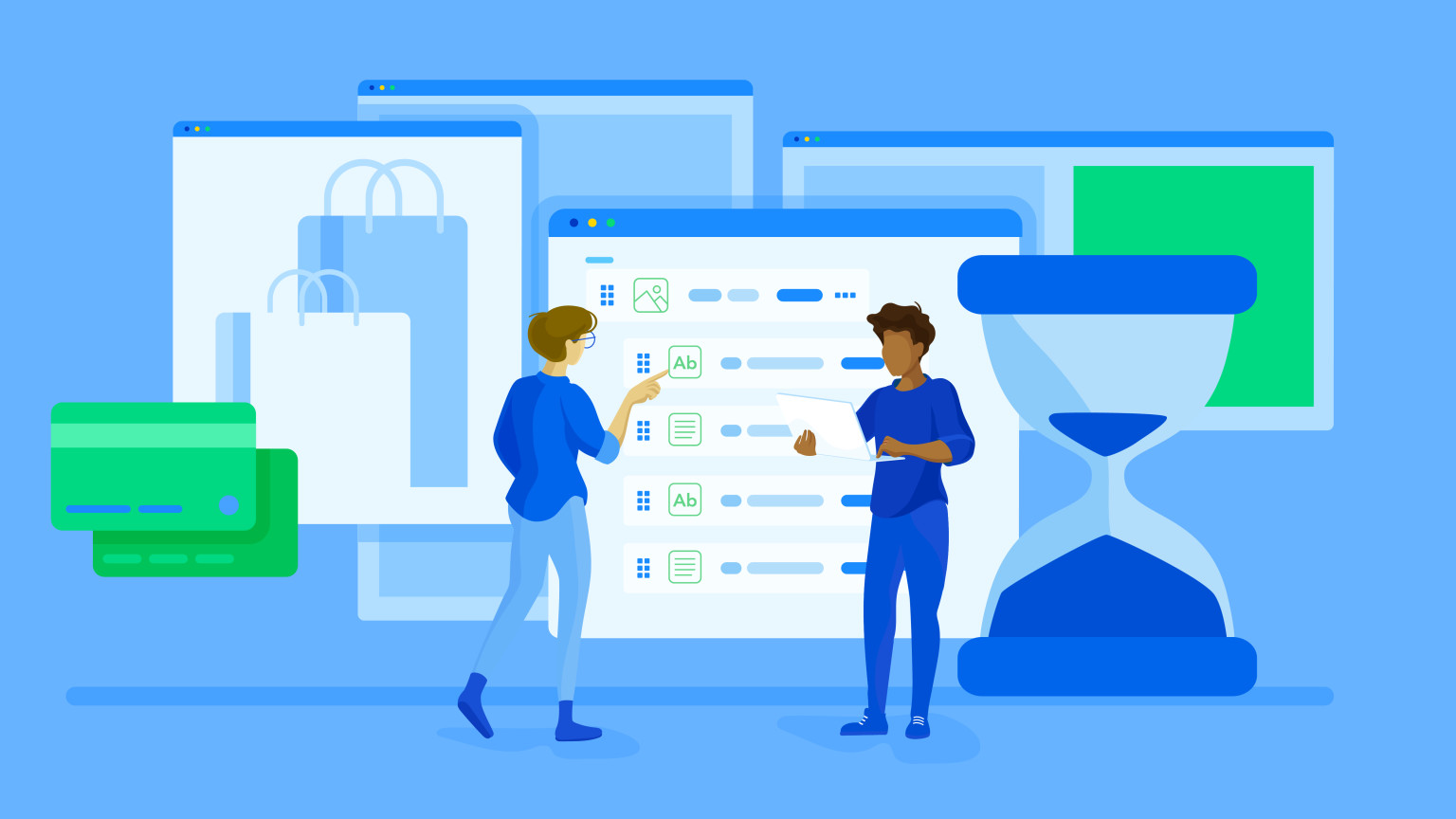Headless ecommerce architecture: Does it make sites longer to build?

Migrating to a new ecommerce service powered by headless architecture may seem daunting, but it is a myth that headless ecommerce sites always take longer to implement. We’ve heard this a lot at Ultra Commerce. But headless ecommerce can save developers time and give them more flexibility while making it easier to complete web optimizations that help improve page load times and overall website performance.
What is headless ecommerce architecture?
Headless ecommerce is a system of integrated tools, all designed for a specific purpose. These tools let you keep the front-end storefront elements separate from your backend code — commonly referred to as decoupling. Concepts like design and presentation, which represent the “head” of your storefront, are separated entirely from backend functions, including customer data management and fulfillment processes.
This separation of management and display results in greater control over design, faster load times and better page performance. Page speed is essential in the success of an ecommerce website, as Google predicts that website performance is one of the top reasons why customers don’t convert when browsing online stores. According to Neil Patel, if an ecommerce site is making $100,000 per day, a one-second page delay could cost $2.5 million in revenue per year. This can be a major loss for online retailers.
Headless commerce architecture changes the game, and a content platform that extends the capabilities of the headless CMS makes headless ecommerce easier than ever. So how can headless commerce builds save developers time in the long run? Let’s take a look.
Headless builds have fewer hacks and workarounds than traditionally built sites
With headless ecommerce architecture, a strict, single method for building the front-end experience no longer exists. Unlike traditional builds, where every redesigned user experience means rebuilding the user interface from scratch, headless ecommerce architecture gives the development team access and complete control of the front-end platform through an API framework.
That means developers are not bound to code, create, and design in a box or based on a single CMS (content management system) or templating language constraints. This diminishes the number of hacks and workarounds. This makes a more seamless and efficient process, saving time in the initial build and money in the long run.
Marketers and experience managers will also like that headless architecture makes it possible for them to control their content and rely less on developers. Not only can it reduce time to market, but this can also make it easier to adjust product information or messaging in real time so customers receive relevant information across multiple touchpoints.
Headless solutions have better developer services, providing critical functionality and support
Developers don't like being held back by inflexible, monolithic tools. Building a storefront using an ecommerce tool that uses headless ecommerce architecture allows developers a wide range of options for their technology stack and commerce services. Simply put, if there’s a need for a better service or tool to integrate with your storefront, you need to be able to do it.
Worse than being locked into an all-in-one tool is a tool that won’t allow for integration with mobile apps or other technologies. Rather than working to create dynamic and modern storefronts, developers are stuck hacking and searching for workflows workarounds.
Headless platforms offer developers more freedom and flexibility
When a development team can choose their front-end delivery service, they can work with familiar tools. That consistency offers a minimal learning curve and reduces the time in training and learning. Using methodologies like Jamstack ensures a consistent approach so that technology can work in the same way. A headless ecommerce architecture allows developers to select the right front-end tools, languages and frameworks that match their skill set and business requirements.
These services and data can be managed within a single hub and accessed from a consistent delivery API. This organization gives developers more flexibility, rather than requiring them to code and design within the traditional architecture’s limits. In the long run, this allows for happier developers who won’t have to build out front-end webpages as they’re needed like they typically do in a traditional build.
Headless ecommerce solutions allow new services to be swapped without having to update everything
Building a storefront using a headless ecommerce architecture enables services to be switched out whenever new and better ones come along — without affecting your entire core infrastructure. Your storefront can be customized as technology and user trends change, so you don’t get left behind your competitors. You don’t have to change everything all at once, which can get expensive and requires more time to upgrade.
Your developers can pick and choose features, such as one-click ordering, and swap out new services and functionalities in your storefront as they’re needed or as you have time and money to make upgrades — without having to redo the entire website.
If headless ecommerce provides more services, doesn’t that mean longer builds?
What happens when additional or upgraded services are required? Your team has reviewed the requirements for a new platform upgrade and determined that customizations and business challenges are best solved by using external services. Of course, that very statement is a win for everyone — a “best” solution will be integrated into the store, no compromises necessary.
Those optimized services, such as SEO, payment, personalization, inventory management, promotions, and fulfillment, can be integrated directly into the platform storefront. Fewer plug-ins are slowing down the platform because these optimized services are being connected and built into the platform API.
However, in a traditional platform, every service request sent through this plug-in-driven architecture triggers multiple steps and actions to enable the desired ecommerce functionality. This translates to a sluggish ecommerce experience that’s slow to load and perform and makes the web development process less efficient. But through the headless approach, there’s no tight coordination to worry about. Developers can integrate new functions directly into the commerce engine as needed. You get simple web architecture, fast loading speeds and more efficient web architecture.
While traditional ecommerce tools may limit design and functionality, going headless gives even more freedom to customize the front end and integrate best-fit services. Developers can create a beautifully branded, memorable customer experience while keeping the existing backend system intact.
In summary, a powerful content platform like Contentful can work together with a headless commerce platform to create better, faster and feature-rich storefronts that are built to deliver.



